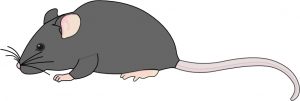Center for Tissue Regeneration and Engineering
News
2024/11/22 Congratulations are due to Prof. Renjin Tu for recently being presented with a National Natural Science Fund for Excellent Young Scientists Fund Program (Overseas) award. 🎉
About stem cells
Stem cells have the unique ability to replicate and differentiate into specialized cells, so they can support normal embryonic development as well as maintain tissue homeostasis in adults. For this reason, they have been proposed as potential treatments for degenerative diseases, such as Parkinson’s disease, Alzheimer’s disease, and type I diabetes. However, it is not all good news as cancer stem cells also replicate, and thus drive tumor growth, metastasis, and relapse. In addition, there is an age-dependent decline in stem cell activity that has been linked to the deterioration of normal tissue functions in the elderly. Acquiring knowledge about stem cell development and function and senescence is therefore critical for the development of suitable therapies to combat cancer and aging. To harness the full potential of stem cells as therapeutic agents to treat degenerative diseases, there are ongoing efforts to generate transplantable tissues or organs by combining these cells with biomaterial scaffolds. However, a major obstacle in realizing the full potential of stem cell therapy is the lack of sufficient knowledge regarding the regulation of stem cell activities inside intact tissues.
About HKUST Center for Tissue Regeneration and Engineering
The HKUST Center for Tissue Regeneration and Engineering (CTRE) is committed to investigate the molecular mechanisms that underlie stem cell maintenance, differentiation, and aging in genetically tractable organisms such as the fruit fly (Drosophila melanogaster), zebrafish (Danio rerio), and nematode (Caenorhabditis elegans), as well as in mammals such as the mouse (Mus musculus) and rat (Rattus norvegicus). We also use human induced pluripotent stem cells (iPSCs) and clinical samples. It comprises a team of investigators with complementary expertise who are working together to reveal how the tissue microenvironment (or niche), controls stem cell maintenance, differentiation, and aging at the molecular and cellular levels using a combination of genomic, genetic, molecular, biochemical and developmental approaches. In this way, they are systematically investigating the mechanisms that regulate stem cell-niche interactions so as to gain new knowledge that has the potential to be applicable to humans.
Fruit fly
(Drosophila melanogaster)

Zebrafish
(Danio rerio)

Nematode
(Caenorhabditis elegans)

Mouse
(Mus musculus)

Human iPSCs
(Homo sapiens)

Our goals
The mechanisms learned from these model organisms will be applied directly to generate artificial niches to expand stem cells and engineer stem cell-based tissues. This will help us gain a better understanding of stem cell regulation in human tissues, further develop stem cell-based therapies to treat degenerative diseases and create new treatment strategies for cancer and age-related diseases in humans.
With funding provided by the Hong Kong Research Grants Council Theme-based Research Scheme (T13-602/21N), the work conducted at the HKUST CTRE will help Hong Kong achieve global scientific excellence in the area of stem cell research. The CTRE is also committed to train young scientists and inspire the establishment of stem cell-based biotech companies, which will benefit Hong Kong from both an economic and social viewpoint.

